Prior to more than 3,5 billion years, in a primordial soup of molecules, the earliest, most basic form of life on earth began to exist: a molecule that can replicate itself, known as a replicator.
Molecular replicators comprise long strings of tinier building-block molecules in the same fashion that a word comprises a series of letters. Replicators replicate themselves via bringing other ‘letters’ to themselves and serving as a template for them to be the same as replicators themselves.
The earliest replicator naturally had a competitive edge compared to the rest of the other molecules in the primordial soup since these molecules were unable to replicate themselves, and therefore the replicator began to increase in amount compared to all other sorts of molecules.
But, errors in the replication process bring about ‘offspring’ replicators with a somewhat distinctive arrangement than their ‘parent.’ These novel arrangements indicated that there were ‘offsprings’ that could replicate themselves quicker, or more true to their parents, furnishing them with a competitive edge in contrast to their ‘parent.’
An increasing number of replicators were created from the limited stock of essential molecules in the primordial soup, and these molecules were depleted over time.
These two notions – a community where capacities differ and an ecosystem of finite resources – are the fundamental necessities for the process that is called evolution.
With the passage of time, more errors in replications brought about novel favorable properties, like the ability to kill other replicators and utilize their building blocks for copying: the first carnivores. Via the formation of novel varieties and the survival of the replicators that possess the most beneficial properties, more intricate species arose, ultimately leading to the diversity of organisms that is present in today’s world.

Chapter 1 – The fundamental unit of evolution is the gene since the gene has the capacity to be present as several replications and is hence almost-intransient.
Evolution comes about via differential survival: in a specific community of alive beings with various facilities, there are those who continue to live and reproduce and those who go extinct.
However, against what is usually believed, the fundamental units, which evolution affects, are not separate organisms but genes: short pieces of DNA, the copying molecule that is the source of all life in the world.
Why? Because genes meet an essential criterion that avoids individual organisms: genes aren’t sui generis and may be present as replications in numerous diverse bodies. To illustrate, every blue-eyed person has in their cells a replication of the gene for blue eyes.
Many organisms, however, are unable to copy themselves as alike replications. The reason for this is that sexual propagation does not yield replications but instead consolidates the parents’ genetic arrangement to generate novel, sui generis individuals.

The truth that genes are present as replications renders genes almost-intransient. Though each organism is inclined to remain alive for no more than several decades, genes have the potential to continue living for thousands or even millions of years. Think about it: even if your forebearers passed away many years ago, you possess many of their genes in your cells without any suspicion and will transfer at least several of them to those who come after you – your children, grandchildren, and so on.
It is the genes’ abundance and power for immortality that renders them open for evolution to affect.
Chapter 2 – Genes are egoistic intrinsically: They manage to live past other genes because they survive by destroying other genes.
We define genes as ‘selfish’: Genes function in a fashion that supports its own continuation at the expense of other opposing genes. But, genes act like this naturally, without being aware of their action; it is just their action that we can define as apparently selfish. In a similar way, even if the process of evolution might seem to be driven towards producing beings that are adapted to certain conditions, this is not a process that has been carried out consciously.
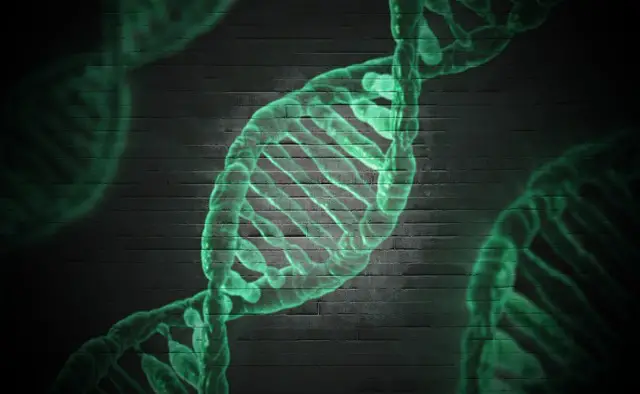
So as to comprehend the reason behind the appearance of genes as selfish, it is vital to look at the physical conditions in which they live: Genes are present inside packages known as chromosomes, protected inside the cells that constitute an organism. Chromosomes exist in groups of two: human beings possess 23 pairs (which add up to 46 chromosomes). Each chromosome in a pair possesses the exact organizational composition, therefore should a section on one chromosome accommodates the gene for eye color, then the other will accommodate a gene for eye color in the exact section. But, the variants of these genes might differ from each other: one of them can be for blue eyes and the other for brown. Separate variants of genes for the same feature are known as alleles; for instance, there are a few alleles of the eye-color gene.
Since the diverse alleles seek to control precisely the same location on a chromosome, any survival edge an allele acquires is inherently selfish: it reduces the survival chance of the other alleles.
Chapter 3 – A gene’s phenotype – how its code is shown in its surroundings – says the last word when it comes to its survival.
In terms of how they look, every gene resembles one another a lot: they are all pieces of DNA. When it comes to the information they carry, the differences abound.
DNA is simply a long molecular string built of four kinds of molecules signified by the letters A, T, C, and G. In the same fashion as it is possible to build each word in English through the 26 letters in the alphabet, it is possible to bring together these four essential building blocks to create numerous diverse and complex DNA sequences to detail all properties of an organism.

This code is converted to the guidance for the way to construct an organism’s physical appearance. Tiny variations in the code come out as features such as longer legs, a survival edge for, for instance, an antelope escaping a cheetah. The long-legged antelope runs away and survives to reproduce offspring with replications of the gene – the code – for having long legs. Therefore, the gene persists living by means of its impact on the body of the antelope. This physical appearance of the gene is called its phenotype.
But, the impacts of genes don’t have to be confined to the body they live in. Virus genes are without their own bodies: their codes change the cells of the body they enter; for instance, it is highly likely for viruses to make the host body sneeze, which serves the virus to pass on to others and hence allows its genes to remain alive.
Chapter 4 – The survival prospect of a gene hinges on its specific environment – not only physical but also genetic.
Great camouflage for a tiger means poor camouflage for a polar bear, due to the radically different conditions to which they are adapted to. A gene for tiger camouflage would drastically reduce the prospect of surviving in polar conditions.
Aside from external conditions, genes are affected by the genes around them as well: every variety (alleles) of a species’ genes in the same gene pool. This encompasses not only the specialized genes that just specific species possess, such as genes for producing wings or meat-eating teeth but also the shared genes that separate species possess.
Whether a gene survives or goes extinct – however beneficial it may be – relies mostly on what other genes give to its gene pool. For instance, were a gene for sharp meat-eating teeth to be given to the gene pool of a herbivorous species, it would highly probably fail due to the other missing genes in the pool that would be indispensable for a carnivore to remain alive, like a gene that permits the species to actually break down and absorb meat.
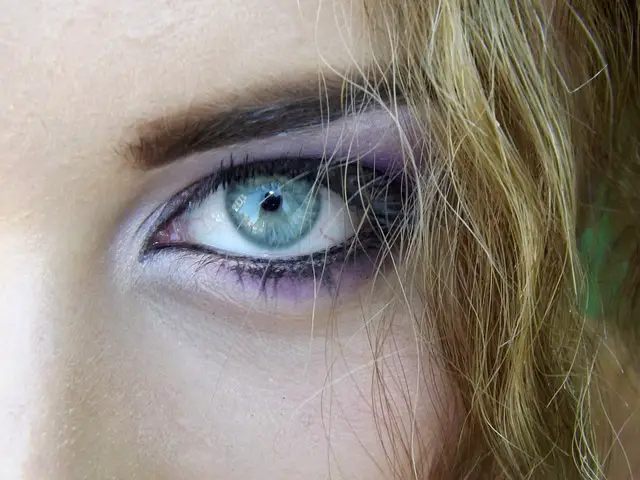
On an individual level, sexual propagation involves the continuous blending of genes, therefore all individuals of a species find themselves having a sui generis set of alleles. Among allele combinations, there are those which are more beneficial than others. Think about a bird species that possess an allele expands wingspan and another that extends tail feathers further. An individual bird that has these alleles will fly more rapidly and a bird that has merely one of these alleles might lose balance and fly slower. So, no allele can yield good outcomes unless the other is present.
Chapter 5 – Organisms are robots constructed by combinations of genes that work together due to sharing a procreative mechanism.
A gene has an effect on a property of the organism in which it exists – like its agility, power, or camouflage. If the effect it exerts on the organism helps the organism, the organism becomes more prone to reproduce offspring that have replications of the gene, and therefore the gene continues to live.
But, it is impossible to construct an organism with just one gene. It entails tens of thousands of genes each cooperating to create something as intricate and elaborate as a human figure. However, we talked about the egocentrism of genes before, then what is the reason for them to work in this way?
The reason is that the genes that are present in an individual organism have in common a procreative mechanism and therefore possess a shared objective: all genes are working to optimize the production and survival chances of the organism’s eggs or sperm. In the same way, while the parasite tapeworm resides in the host’s body, the tapeworm’s genes never work together with the genes in that body since there is no common procreative mechanism between the parasite’s genes and the body’s.
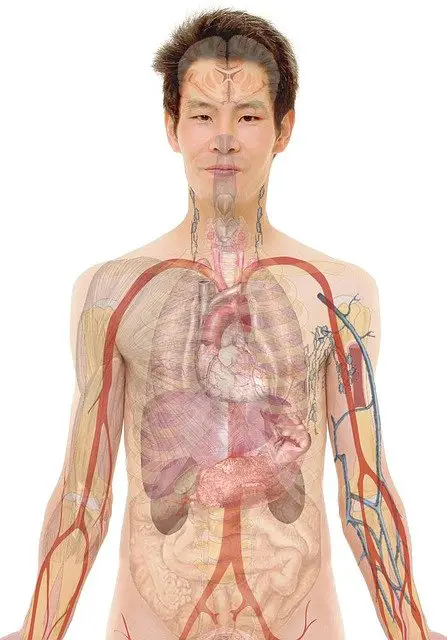
The collaboration of genes exhibits itself as a whole organism, which is the total of all phenotypes they have. The genes in essence construct a robot – the organism – around themselves, and this robot procreates offspring who possess replications of those same genes, therefore assisting them to remain alive.
Though genes inside this robot work together to guarantee their survival, it doesn’t mean that individual robots as a group will work together since their genes don’t have a shared pathway of propagation. Instead, through the control of its genes, every organism should strive to reproduce and survive its own eggs or sperm and should, consequently, behave egotistically towards other organisms within its group. But, this is not how it constantly is, which you’re going to examine in the upcoming chapters when we look at the phenomenon of altruism.
Chapter 6 – Genes install the brains they created with behavioral tactics that are beneficial for their survival.
It is possible that an individual gene’s phenotype, such as for longer legs, has to live through many ages to demonstrate that it succeeds more than another. But, in order to achieve survival, the organism that genes construct has to have the capacity to respond much quicker to environmental stimuli – to eat, attack or escape instantly. In order to make this easier, genes construct brains that enable organisms to react to quickly altering conditions in their environment. These responses are known as “behavior.”
The external environment can cause an endless amount of diverse situations, therefore it is utterly improbable for an organism to be poised to react to each one. Rather, behavioral reactions are controlled through ‘rules’ that are produced by the genes in a manner similar to the way a computer is programmed. For instance, two of these rules may be for an organism to view food that is sweet as rewarding and to redo things that lead the organism to this reward.
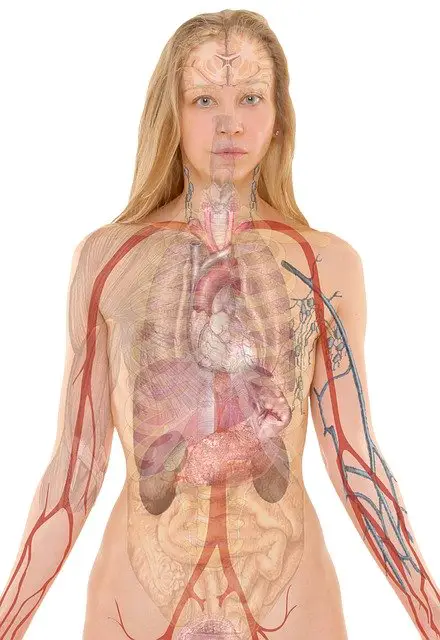
The issue with a rule-based organization of organisms is that it precludes organisms from adjusting themselves to drastic transformation in their environment. A tendency toward food that is sweet provided assistance for survival to first hunter-gatherer humans; however, it is now a cause of the obesity pandemic in the present-day calorie-loaded world.
Smart organisms have the potential of reducing the negative impact of such old rules through two methods: learning and simulation. Learning refers to implementing an action in order to see whether it yields good results, and then keep in mind what the result is; simulation refers to thinking about the result of action prior to implementing it, which both prevents unnecessary strain and protects them from likely hazardous actions. For instance, an organism aware of how hazardous it is to leap off a cliff in advance has a survival edge compared to an organism that needs to make an attempt to see whether it is hazardous or not.
Chapter 7 – Rivalries between strategies lead to a constant behavioral pattern in a population.
Life forms of the same species are straight rivalrous with one another for resources, which are likely to trigger conflicts between individual organisms. It is possible to tackle these conflicts through diversified behavioral strategies, varying from escaping to fighting to the death.
it is possible for behavioral strategies, as any other feature of a life form, to undergo changes, and there will be changes which will increase the prospect of the survival of the organism – and its genes – compared to other changes. By the same token that the success of a gene is dependent on its environment, the success of an organism’s behavioral strategy hinges on the way every organism other behaves around it.
For instance, consider a group of birds that have three behavioral strategies for conflicts:
- “Doves,” which escape should another organism attack them;
- “Hawks,” which constantly assail and fight until critically injured;
- “Retaliators,” which act in the same way as Doves until they’re assaulted, but react the same way as Hawks after the assault takes place.
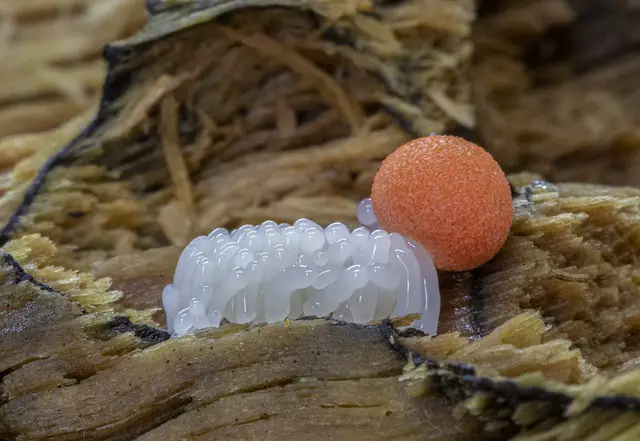
If a Hawk invades a Dove population, they’ll be victorious since no Dove will put up a fight against them. Therefore, Hawk genes rise within the population. But, once the population has begun to be made up largely of Hawks, the proportion of Doves starts to go up since Hawks are much more tended to become wounded in violent confrontations with other Hawks, which presently exist in profusion in the population. Both the Hawk and Dove constitute an unstable strategy from the viewpoint of evolution since none of them can fully invade the population of one another.
Retaliators, however, don’t get wounded due to useless confrontation, however, they protect themselves should the need arise (contrary to what the Dove does). Consequently, in a population of Retaliators, both the Hawks and Doves couldn’t overcome Retaliators; the Retaliator’s strategy makes up a stable strategy in terms of evolution.
Chapter 8 – The egoistic survival urge of genes accounts for seemingly selfless behavior such as parental care.
As previously mentioned, since genes are at the helm of behavior, and genes are egoistic, then it is possible to assume that organisms inside a community would act egoistically toward one another.
But, we can list a lot of instances of behaviors in the external world that seem like selfless, the most visible of which are the numerous instances of highly dedicated parental care, like a mother bird pretending as if it has an injured wing to drive a fox away from her offspring. It is possible to define altruism in this context as acting in a manner that decreases one’s own prospect of remaining alive for another being’s interest.
This obvious inconsistency vanishes if the situation is contemplated taking into consideration one of the fundamental features of genes: genes are present as many replications in several organisms. Therefore, genes arrange behaviors advantageous for their replications in other organisms, even if they need to sacrifice their organism – however, it is true as long as there is a huge survival advantage of the gene.

What is the way for a gene to be ‘aware’ that another organism possesses replications of its genes? The gene is unaware of it: genes have got no consciousness and have no knowledge about anything. However, organisms that share genes with each other do have in common replications of genes. Therefore, genes that arrange organisms assist their kin to have a survival edge and, as a result, result in the survival of those behaviors as well.
Altruism doesn’t have to be committed by both parties, however. Parents and their offspring are fairly close to each other in terms of family bonds, however, parents act with higher selflessness towards their offspring than the other way around. The reason for this is that so as to help their genes live longer than one generation, the parents need to guarantee their offspring remain alive until their procreative age arrives. As for the children, the survival and health of their parents don’t matter as much, therefore, we see this asymmetry in selfless behavior.
Chapter 9 – Reciprocally selfless behaviors are usually successful since they serve the host’s genes a lot more compared to the fully egoistic behaviors.
While describing cooperations among organisms, a valuable law is the concept of the zero-sum or non-zero-sum ‘game.’ In essence, a zero-sum case is one in which one side wins and the other loses; for instance, in the situation of a cheetah pursuing an antelope, there are two options: the cheetah catches the antelope and eats it or the cheetah dies of hunger.
By comparison, a non-zero-sum case is one in which both ‘sides’ are working together against a ‘bank’ that possesses the resources. One side’s triumph isn’t the indication of the other side’s loss. Both sides may betray one another in order to get a greater portion of the bank’s resources, however, according to the rules, one other option is to collaborate to get the better of it.
In the external words, organisms typically are rivalrous for resources in their surroundings. Even if there are numerous cases in which the rivalry is a zero-sum game, like in the situation of the cheetah and the antelope, in other situations, collaboration can yield much better results, which can happen as a collaboration between the members of the same species or different species.

For instance, ants “milk” bugs known as aphids for the sweet secretions aphids provide. You may think this a case in which ants exploit aphids, however, in reality, the aphids receive vital security from predation thanks to battle-ready ants defending them. Occasionally ants even bring up and guard baby aphids inside anthills. Thus, this collaboration serves the survival of both ant genes and aphid genes. The final outcome – a rise in survival – fulfills an egoistic motive, however, they reach this motive through reciprocal altruism.
Chapter 10 – Human culture undergoes evolution as well, and its fundamental unit is the meme.
One of the most unique features of our species is culture: the features of our lives that are not natural and have no link to survival, like language, clothes, diet, rituals, traditions, and art. Even if it is likely probable to find essential human psychology and interests in the survival advantages of reciprocal altruism and assisting kin, they are not fully satisfactory in expounding the complexity and variety of culture.
Rather, it is possible to think of culture as the equivalent of a gene pool, with the fundamental component of cultural evolution being a meme rather than a gene. A meme is the tiniest bit of culture with likely permanence, like a melody, a notion, or a video of a dancing cat on Youtube. The means of transmission are the means of human communication: speech, writing, the Internet.
As is the case with genes, memes are rivalrous with each other. Some memes confront each other directly – like evolutionary theory and creationism –, however, each of them strives to capture human attention and recollection. By the same token that genes work together to create intricate organisms, memes create intricate entities as well: the Catholic Church is a collection of ideas, ceremonies, dresses, and architecture around the fundamental meme of an all-powerful Divine Being.
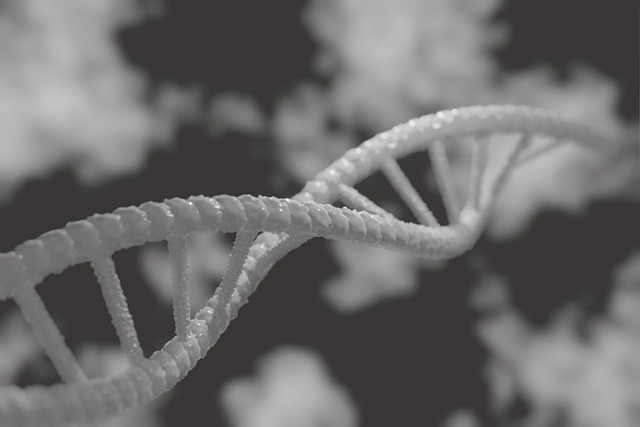
Isolating culture from biology facilitates the elucidation of some of humanity’s more unique features, like chastity, which is utterly against biological urges. Should culture be its own evolutionary system with its own replicators, the sole thing for replicators to do is to remain alive within this system. They don’t have to be affected by things that are not inside the meme pool, like biological survival. As is the case with their gene counterparts, the accomplishment of memes relies on their surroundings – from which one infers that the Internet provides a nurturing environment for videos of dancing cats!
Chapter 11 – Conscious human prescience has the potential of assisting us to surmount the setbacks of biological gene egocentrism.
Examples of behavioral strategies demonstrate that populations are inclined to wind up with a firm strategy and that populations that enter into a reciprocally selfless strategy usually do well, even if every organism is driven by whatever is the best for their genes.
However, occasionally, an even much better answer for everything can be obtained by relinquishing the direct survival interests of the genes. Think about a population where only two species that have two separate confrontation strategies exist: the Hawks, who are constantly assailant in violent conflicts and will combat until death or severely wound; and the Doves, who flee should they be assailed. Hawks will constantly triumph over individual Doves, however, in the long term, their strategy is in fact less advantageous because of the life-threatening damages they receive from combatting other Hawks. The solutions that are most advantageous for all the organisms are the ‘conspiracy of Doves,’ in which each member in a population assents to becoming Doves, relinquishing the short-run gains of acting the same as a Hawk does so as to receive the long-run gains of living congruously with others and evading severe wounds and death.

Genes don’t have consciousness and cannot predict the future, thus there is no way for them to be able to take part in a conspiracy of Doves, despite the fact that it would benefit them largely.
Humans, however, possess conscious prescience. Our culture, if we consider it from the perspective of memes, has already parted itself from biological compulsory urges, such as breeding. Though humans are genetically or by nature not selfless, it is possible for them to utilize their prescience to stand up to gene egocentrism and, at a minimum, to engage in the conspiracy of Doves so that we become more fortunate in the future. Perhaps humans can reach genuine altruism, which is not intrinsic to nature.
The Selfish Gene by Richard Dawkins Book Review
Evolution takes place via the operation of natural selection on genes, not on individuals or species. Genes are egoistic intrinsically, which means that genes that value their own survival more than other genes are inclined to have a greater potential for surviving. We can locate the origin of every animal behavior in the selfishness of their genes.
Through which processes does evolution come about and what role do genes play in this?
- Evolution is induced through diverse skills and scarce resources.
- The essential component of evolution is the gene since it has the capacity to be present as many replications and is thus almost-intransient.
- Genes are intrinsically egoistic: they can only remain alive through generations if they fight against other genes.
- A gene’s phenotype – how its code is displayed in the external world – determines its prospects of living.
- The prospect of a gene’s continuation hinges on its specific surroundings – not only physical but also genetic.
How does selfishness that is pertaining to genes affect the behaviors of the organism?
- Organisms are robots produced by sets of genes that work together just because they have a procreative mechanism in common.
- Genes install the brains they construct with behavioral strategies, which provide them assistance in their survival.
- Rivalries between strategies lead to a stable behavioral model in a population.
- Reciprocally selfless behaviors are usually successful since they serve the host’s genes more than totally egotistical behaviors do.
Where do we see this theory in terms of human behavior and cultural development?
- Human culture undergoes evolution as well, and its fundamental component is the meme.
- Conscious human prescience can aid us to surmount the setbacks of biological gene selfishness.
